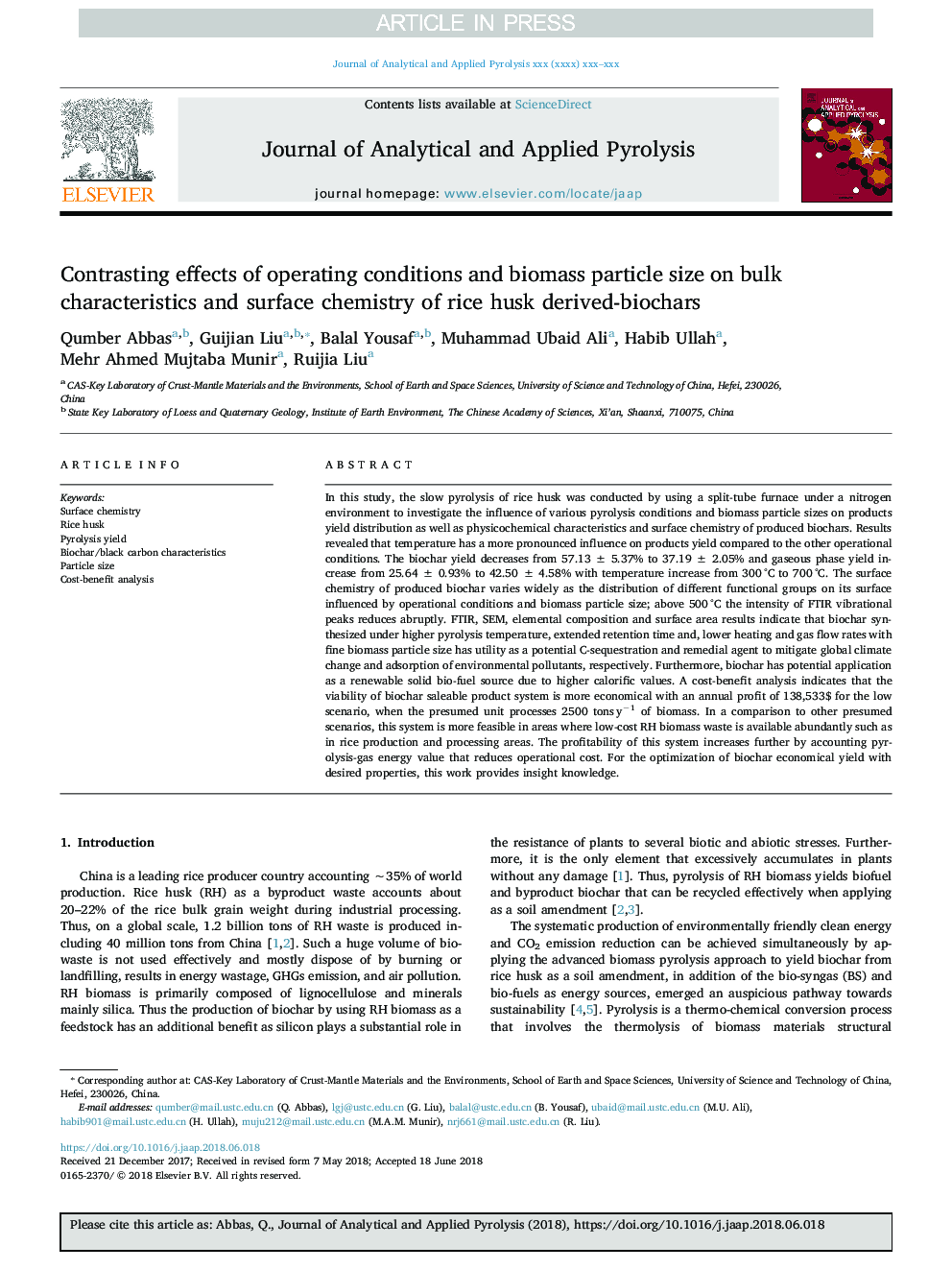| Article ID | Journal | Published Year | Pages | File Type |
|---|---|---|---|---|
| 8954850 | Journal of Analytical and Applied Pyrolysis | 2018 | 12 Pages |
Abstract
In this study, the slow pyrolysis of rice husk was conducted by using a split-tube furnace under a nitrogen environment to investigate the influence of various pyrolysis conditions and biomass particle sizes on products yield distribution as well as physicochemical characteristics and surface chemistry of produced biochars. Results revealed that temperature has a more pronounced influence on products yield compared to the other operational conditions. The biochar yield decreases from 57.13â¯Â±â¯5.37% to 37.19â¯Â±â¯2.05% and gaseous phase yield increase from 25.64â¯Â±â¯0.93% to 42.50â¯Â±â¯4.58% with temperature increase from 300â¯Â°C to 700â¯Â°C. The surface chemistry of produced biochar varies widely as the distribution of different functional groups on its surface influenced by operational conditions and biomass particle size; above 500â¯Â°C the intensity of FTIR vibrational peaks reduces abruptly. FTIR, SEM, elemental composition and surface area results indicate that biochar synthesized under higher pyrolysis temperature, extended retention time and, lower heating and gas flow rates with fine biomass particle size has utility as a potential C-sequestration and remedial agent to mitigate global climate change and adsorption of environmental pollutants, respectively. Furthermore, biochar has potential application as a renewable solid bio-fuel source due to higher calorific values. A cost-benefit analysis indicates that the viability of biochar saleable product system is more economical with an annual profit of 138,533$ for the low scenario, when the presumed unit processes 2500 tonsâ¯yâ1 of biomass. In a comparison to other presumed scenarios, this system is more feasible in areas where low-cost RH biomass waste is available abundantly such as in rice production and processing areas. The profitability of this system increases further by accounting pyrolysis-gas energy value that reduces operational cost. For the optimization of biochar economical yield with desired properties, this work provides insight knowledge.
Related Topics
Physical Sciences and Engineering
Chemistry
Analytical Chemistry
Authors
Qumber Abbas, Guijian Liu, Balal Yousaf, Muhammad Ubaid Ali, Habib Ullah, Mehr Ahmed Mujtaba Munir, Ruijia Liu,
